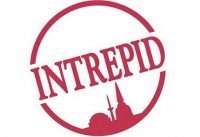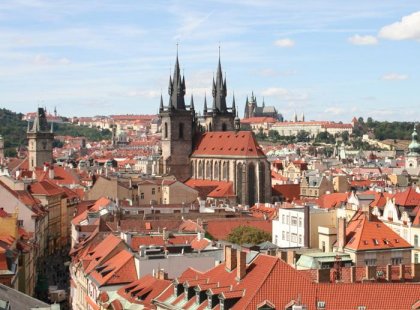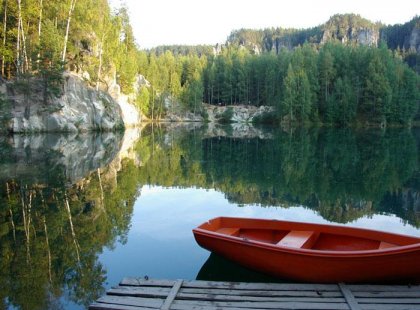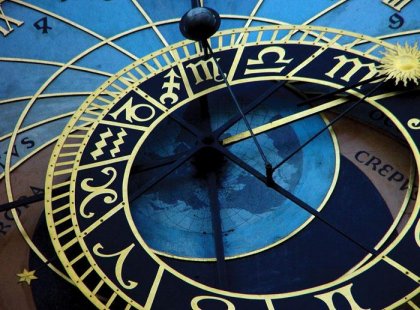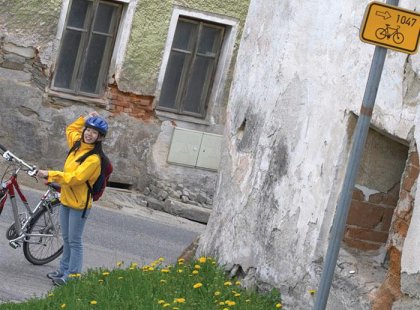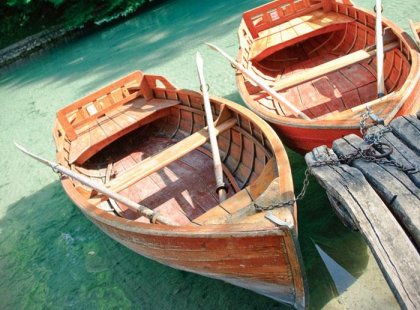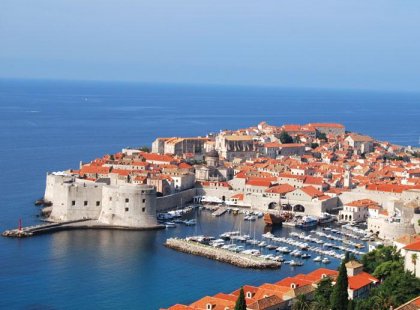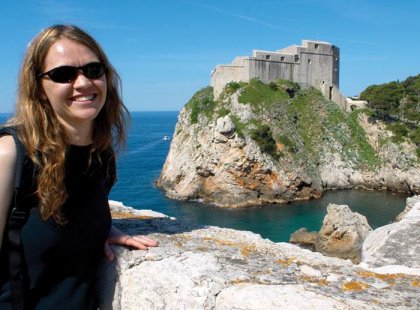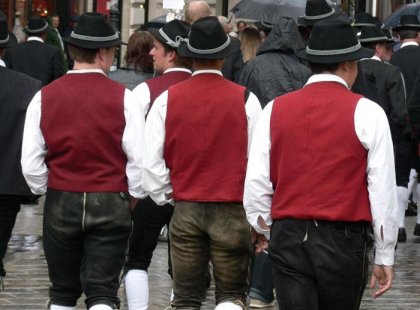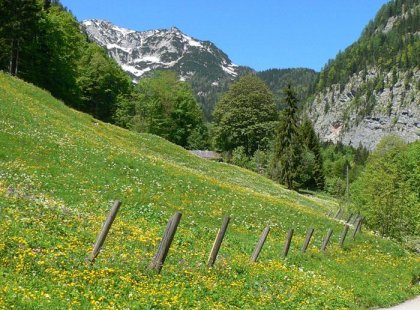Vienna to Dubrovnik
29 days
from Vienna to Hotel Dubrovnik
From
$ 4900
Duration29 days
Tour Central Europe on an adventure from Vienna to Dubrovnik. Travel from Vienna to Dubrovnik on a tour through Austria, the Czech Republic, Poland, Slovakia, Hungary, Serbia, Bosnia-Herzegovina, Montenegro and Croatia. Discover a region where the past continues to weave its spell through alpine towns and green valleys, and emanates from medieval castles and austere monasteries - getting a sense of the hidden magic of Central Europe. Traversing nine countries, there is much to see and plenty of opportunity to experience the culture and the people of this enchanting pocket of Europe. Better yet, there's loads of flexibility for you to do it your own way.
-
Duration: 29 daysService level: Standard
-
Starts in: ViennaPhysical Grading: Light
-
Ends in: Hotel DubrovnikAges: 15+
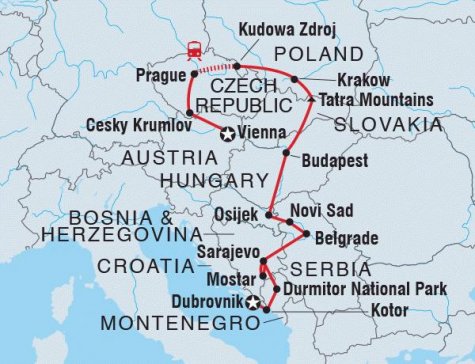
Itinerary
Day 1: Vienna
Start place: Vienna
Welcome to Vienna, Austria. Your adventure begins with a welcome meeting at 6 pm. You can arrive at any time during the day as there are no activities planned until this important meeting. Please confirm with the hotel reception where and when it will take place, or check the reception noticeboards. If you're going to be late, please inform the hotel reception. We'll be collecting your insurance details and next of kin information at this meeting, so please ensure you have all these details to provide to your leader. Vienna is a beautiful city, so if you arrive early make sure you go for a walk. Perhaps even take a spin on the famous old Prater Ferris Wheel. Use the evening getting to know your fellow travellers over dinner.
Your base for two nights in Vienna is Magdas Hotel – an accommodation that is unlike any other hotel you are likely to come across on your travels. Magdas Hotel is a social project bringing refugees from all over the world to work together in one place. Hotel is staffed with refuges so expect to hear different languages and different stories from all over the world. Also the building’s history is interesting – it’s a former old people’s home and homeless shelter which has been completely renovated. Most of the furniture is also re-cycled, renovated and re-purposed. The place is full of love, passion and unity. It’s full of colours and smiley faces. Magdas Hotel ‘brings together what belongs together’
Your base for two nights in Vienna is Magdas Hotel – an accommodation that is unlike any other hotel you are likely to come across on your travels. Magdas Hotel is a social project bringing refugees from all over the world to work together in one place. Hotel is staffed with refuges so expect to hear different languages and different stories from all over the world. Also the building’s history is interesting – it’s a former old people’s home and homeless shelter which has been completely renovated. Most of the furniture is also re-cycled, renovated and re-purposed. The place is full of love, passion and unity. It’s full of colours and smiley faces. Magdas Hotel ‘brings together what belongs together’
Day 2: Vienna
Join your leader for a walk through the city's compact centre this morning (approximately 2 hours). Stop at the gothic looking St. Stephens Cathedral, wander past the neo-classical grandeur of the Graben and onwards to the Hofburg Palace. Finish your orientation of the city at the State Opera House, one of the world's most important opera houses and the heart of classical Viennese culture. Art lovers have a vast choice of museums, from the Albertina to those located in the Museum Quarter. You have the rest of today to explore Vienna and its surrounds. You might like to head out to Schoenbrunn for a guided audio tour of the summer palace, designed by Empress Maria Theresa. The Gloriette Monument has incredible views of Vienna and the palace gardens are free to all visitors, but there's a charge for entrance and tours of the palace. In the evening, perhaps head out for some Viennese cuisine.
Meals: B
Day 3: Cesky Krumlov
Depart Vienna by minivan in the morning and cross the border into the Czech Republic (approximately 3.5 hours). Our first stop is the southern Bohemian town of Cesky Krumlov. This picturesque medieval town dates back to the 13th century and is straight out of a fairytale. Cesky Krumlov (pronounced 'Che-skee Krum-lov') means 'crooked meadow', which is befitting of a town that's nestled in a sharp bend of the Vltava River. Venture out on an included cycling trip in the afternoon, across rolling hills and through tiny hamlets (approximately 2-2.5 hours). If you have time, explore the city's castle and its fabulous masquerade hall, or climb the tower for aerial views of the town. For the active, there's the option to canoe or kayak down the river.
Meals: B
Day 4: Cesky Krumlov
Today is a free for you to enjoy as you please. Perhaps take an optional guided walking tour of the town, which includes commentary of the mysteries that lie behind every shopfront and house on the crooked little streets. For those who want a bit more culture, and time permitting, visit the Egon Schiele Art Centrum and browse the gallery that's dedicated to the Austrian painter. If you are an adventurous spirit, jump in to a canoe and discover the town from a perspective of Vltava River.
Meals: B
Day 5: Prague
Farewell this southern bohemian town and travel by bus to Prague (approximately 4 hours). During your stay in Prague, you'll have share the apartment with other members of the group. Several separate apartments are located in the city centre so you may be a short walk away from your other group members and your leader. Staying in the city centre allows easy access to all the sights and the restaurants and bars. Each apartment has two to three rooms with one or two shared bathrooms. Most of the apartments have fully equipped kitchens and you can choose to buy your own groceries and supplies for meals. On arrival into Prague, head out on an orientation walk with your leader, and spend the rest of your afternoon as you wish.
Meals: B
Day 6: Prague
Today is free to explore Prague. The city offers many possibilities, so perhaps take a walk around the Jewish Quarter and pay respects at the Gothic looking Old Jewish Cemetery. This is Europe's oldest surviving Jewish cemetery, with 12,000 tombstones and 100,000 graves. Visiting The Museum of Communism can shade some light on this part of dark history shared by most of central European countries which somehow isn’t yet well known to the broader audience. Visiting town hall Clock Tower is a great way to finish off a busy day, before heading out for a dinner, and perhaps discovering another great side of Prague: the longest-standing and respected jazz scenes in Europe. If you should find yourself out until the early hours in an atmospheric jazz club, have a wander along Charles Bridge or Old Town Square as the sun rises for magical photo opportunities.
Day 7: Prague
Spend some time this morning at Prague Castle, the biggest castle in the Czech Republic, where you'll find the famous St. Vitus Cathedral and colourful alleyway of the Golden Lane. A bike tour through the city is a great way to see a lot of the city's sights and attractions in a short period of time. If you can make time, take a day trip out of town and visit Kutna Hora. The Bone Church (Sedlec Ossuary) is a particularly unique experience. Perhaps use your evening to head out for dinner with the group.
Day 8: Gory Sowie
Heading north by train, arrive in the small town of Broumov from where you'll cross the Czech–Polish border. From here you'll be transferred in a private vehicle to the nearby small village in range of Gory Sowie (translated as Owl Mountains). Today's travel time will be around four hours in total. On arrival, check in to our pension situated at the foot of highest mountain in the range – Wielka Sowa. On arrival, visit a nearby underground city from the tragic times of the II World War. Osowka is a mysterious underground complex where workers from concentration camps were forced to work in order to create huge systems of concrete corridors, fortifications and halls. As the work was kept in secret, until now there is many theories trying to explain what the underground city was meant to be used for. Find out yourself on an included guided visit this afternoon.
Day 9: Krakow
Continue east today by private bus and journey to Krakow (approximately 5 hours). Possibly the best known of all Poland's cities, Krakow was the residence of Polish kings from the 11th to the 17th centuries, and its Old Town is a World Heritage-listed site. Take part in leader led orientation walk and once you know your whereabouts, perhaps go and discover one of the biggest and arguably most beautiful medieval squares in Central Europe. Afterwards make your way to the Jewish Quarter and soak up the easy-going atmosphere of this place. In the evening, perhaps head out for some good Polish grub.
Meals: B
Day 10: Krakow
Today, explore the city in your own time. Discover Wawel Royal Castle, which sits atop a hill next to the Vistula River. Check out the 13th-century town square of Rynek Glowny and get a glimpse inside St Mary's Basilica which features an extraordinary wood-carved Gothic altarpiece. There's also the lovely neo-Gothic St Francis' Basilica, which has some of Poland's best Art Nouveau. In Krakow, you will also find the second oldest university in Central Europe (the oldest is in Prague). Jagiellonian Univeristy counts Copernicus and Pope John Paul II among its alumni. If you can tear yourself away from Krakow, head out to the Wieliczka Salt Mines, a network of tunnels and chambers some 135 metres below the ground. This is a salt mine that was in operation for over 700 year and is listed as the UNESCO world heritage site. The mine has a labyrinth of tunnels, pits, and chambers, all hewn by hand from solid salt, with beautifully adorned chapels and underground lakes. Don't miss a look at the elaborate salt chandeliers and carvings in the Blessed Kinga Chapel. Krakow has many cellar restaurants and pubs. Perhaps end the day indulging in a few drinks and a plate of pierogi in one of the city's cheerful establishments.
Meals: B
Day 11: Tatra Mountains
Say farewell to Krakow today and travel by local buses through southern Poland to Zakopane where you will switch on to a private transport (approximately 5 hours altogether). The trip may be long and a little slow, but the scenery of rolling hills and tiny villages is soothing. Tatranska Lomnica is your destination in Slovakia. It's a small alpine resort at the base of the Vysoke Tatry (High Tatra) Mountains. The Tatras, the highest range of the Carpathians, stretch for about 60 kilometres across the Polish-Slovakian border and are a trekker's dream. The evening is free for you to enjoy as you please. Perhaps the best way to do it is to sit back, kick your feet up and soak in the atmosphere of this beautiful mountainous region.
Meals: B
Day 12: Tatra Mountains
This morning head out on an included hike in the Vysoke Tatry mountains. The most known route is about 6km in length and it is normally completed in 3 hours, including stops on the way. The route includes gradual hill ascents and descents and walking on gravel and uneven rocky surfaces with some slippery sections. The pace and distance will be decided on the day, depending on weather and group abilities – parts of it will involve travelling by funicular, gondola and electric train and a snack lunch will be supplied during the trek. It won’t be very challenging, but a basic level of fitness will help you to enjoy it to the fullest. An alternative and easier route can be suggested by the tour leader to those that do not wish to complete the long walk. We recommend a good pair of comfortable shoes and clothes for unpredictable mountainous weather. During the walk, you may notice that some parts of the forest have been destroyed. This was the result of a tornado-like storm in 2004 that decimated approximately 10,000 hectares of timberland. In the afternoon, head back to the accommodation and enjoy the remainder of the day in this beautiful location.
Meals: B
Day 13: Budapest
You have an early start today for the long journey to Budapest As there won't be too much free time to explore on arrival, perhaps check in to the accommodation and then go for a brief walk around the city to get your bearings. The grand architecture and boulevards evoke a bygone era, while glamorous stores and glitzy restaurants make this one of the truly great cities of Europe. Take the evening as an opportunity to relax after a long day of travelling. Visiting one of Budapest's many restaurants or bars is a great way to do it.
Meals: B
Day 14: Budapest
Today you have a full free day to explore Budapest. Known as 'The Pearl of the Danube', Budapest is a great city to enjoy from the water. Perhaps take a boat trip along the river or catch a funicular up to the castle for spectacular views of the Parliament Building. Perhaps head to Statue Park to see the communist monuments that were removed from the city after the fall of the Iron Curtain. One unmissable activity is a soak in Budapest's hot thermal baths. The pools vary in temperature, and some even feature whirlpools or seats where you can enjoy a game of chess. You might like to take part in one of our Urban Adventure day tours, such as the Budapest Custom Tour or Bites and Sights. See more at urbanadventures.com.
Meals: B
Day 15: Budapest
Today is free for you to enjoy as you please. Set out to discover more of Budapest in detail. With great restaurants, art galleries, shopping and nightlife on offer, Budapest is a world-class city exuding confidence and style through every pore.
Day 16: Budapest
Today you have a full free day to explore Budapest, known as 'The Pearl of the Danube'. Admire intricate carvings on resplendent buildings, cross the iconic Chain Bridge to explore the Castle District, or simply meander through winding streets snacking on local delicacies. Budapest is a great city to enjoy from the water. Perhaps take a boat trip along the river or catch a funicular up to the castle for spectacular views of the Parliament Building. With so much to see and do, hiring a bicycle is another great way to move between the sights. Perhaps head to Statue Park to see the communist monuments that were removed from the city after the fall of the Iron Curtain. You might like to take a tour of the beautiful Hungarian State Opera House, or check out the Hungarian National Museum. One unmissable activity is a soak in the healing waters of Budapest's hot thermal baths.
Meals: B
Day 17: Osijek
Cross the border into Croatia and travel by private van through the Hungarian Puszta to a land of cornfields, vineyards and pastel-hued villages, famed for its cuisine – the Slavonian capital of Osijek (approximately 4 hours). This laid-back university town features an enchanting medieval citadel (Tvrđa), as well as the Upper Town, only a short walk along the banks of the Drava. Many cafes line the river, inviting you to join in on the Croatian national pastime: people watching. Osijek is a fairly well-designed city easily navigated on foot. There are also numerous cycling routes throughout the city. Navigate the hallways of grand buildings, stroll along the banks of the Drava River or pick up the true flavours of this destination at a local cafe.
Meals: B
Day 18: Osijek
Today is a free day to explore Osijek and its surrounds. You might like to visit the small provincial town of Dakovo, about 35 kilometres south of Osijek. The town is dominated by an impressive neo-Romanesque cathedral. While here, don't miss seeing a workout session at the Lipizzaner horse training stables and learn about their history from a local guide. You could also use the day to visit the wetlands of Kopacki Rit Nature Reserve for a spot of bird watching, visit nearby Tikves Castle, or historical Batina Hill from where you can see both Hungary and Serbia across the Danube. In Osijek itself there’s the Museum of Slavonia and the Archaeological Museum to explore. Or you could just hire a bike and cycle around this delightful region. However you're feeling, there are plenty of options to choose from today. This evening, maybe discover some of the best cuisine in Croatia with traditional dishes like fiš paprikas (fish stew with hand-made noodles), kulen (spicy sausages), and čobanac (stew).
Meals: B
Day 19: Vukovar / Ilok / Novi Sad
Today travel to Novi Sad by private minibus. Learn more about recent history by taking a side trip to nearby Vukovar en-route, a town that symbolises the devastation of the recent war – the town fell in 1991 after the fiercest and most protracted battle seen in Europe since 1945. The town's ruined water tower now stands as a memorial of the ethnic war that raged in this region during the early 1990s. Next up is a visit to a local vineyard in quaint Ilok to see the workings of a family-run vineyard. The old wine cellar dates back to 1450, and is the first originally purpose built wine cellar in this part of Europe. Taste a range of their wines, including the famous Ilok Traminac Premium wine, which was served at the celebration of the coronation of Queen Elizabeth II. Head across the border into Serbia to the historic town of Novi Sad (approximately 1 hour). Sitting on the banks of the Danube River, the city is surrounded by fertile farms and vineyards and features an interesting mix of traditional Serbian cultural heritage and Austro-Hungarian architecture. During your free afternoon make sure you stop by the city’s fortress of Petrovaradin, which sits right on the Danube and contains a museum of historic artefacts from the region.
Meals: B
Day 20: Belgrade
Travel by two-hour train or bus to Belgrade. Known as the' White City', Belgrade is one of the oldest cities in Europe. Sitting at the confluence of two major rivers the – Sava and the Danube – it’s an important intersection between Eastern and Western Europe. Here you’ll experience an energetic mix of progressive flamboyance and conservative customs. On arrival, enjoy a guided tour of the city’s wide boulevards and squares, and the historic and green heart of Kalemegdan Park. The park is home to Kalemegdan Fortress, which has overlooked the Danube River here for centuries. In the evening, head down to Skadarska Street in the bohemian quarter of Skadarlija to sample some authentic local food and enjoy the lively atmosphere, in a place where Orthodox churches vie for space next to fashionable nightclubs.
Meals: B
Day 21: Belgrade
Today is a free day to further discover Belgrade. You might like to take a cruise along the Danube River, passing the Kalemegdan Fortress, Pancevo Bridge and Zemun. Make sure you visit the imposing Hram Svetog Save (St Sava Church). Alternatively the local market Zeleni Venac can keep you occupied for hours. Perhaps take a stroll through the Nikola Tesla Museum to learn about the life and work of Serbia's greatest inventor, or check out the city's Ethnographic or Military Museums. You can climb the 36-metre, 1896 Gardos tower in Zemun for sweeping views of the city and the Danube, or get a crash course in Serbian contemporary art at Zepter Museum. If the weather is warm, why not brave the crowds on Ada Ciganlija beach, where you can swim, take part in water-sports or simply soak up the sun with a cocktail. Throughout the summer months, Belgrade hosts a variety of musical and cultural events and the city is abuzz with people and activities. The city’s nightlife has become legendary throughout Europe, with several hundred floating bars, restaurants and nightclubs lining the Danube and Sava rivers.
Meals: B
Day 22: Sarajevo
Today travel by bus through beautiful countryside to Sarajevo. The journey will take around eight hours in total, so sit back and enjoy the scenery. Sarajevo is Bosnia and Herzegovina's small but vibrant capital. Twenty years after the end of a devastating war, Sarajevo is slowly asserting itself as one of Europe's most beautiful and interesting destinations. The city often draws comparisons with Istanbul as a city that mixes east and west – dotted with minarets, mosques, bazaars and the aroma of coffee. On arrival, embark on a guided tour to gain an insight into the history and culture of the city. Sarajevo is one of the few cities in the world that features an Orthodox church, a Catholic church and a mosque (the famous Begova Džamija) all within close proximity. In the evening, perhaps enjoy a simple but delicious meal in Bascarsija, Sarajevo's old bazaar. Out from here the city’s history unfolds – from Ottoman-era buildings to the elaborate constructions of the Austro-Hungarian period and on to the ugly structures of the communists. Try the local speciality of bosanski cevapi (grilled minced meat mixed with mild spices).
Meals: B
Day 23: Mostar / Sarajevo
Today head out of Sarajevo for a day trip to Mostar, a town situated in a beautiful valley in the high mountains of Herzegovina (approximately 2.5 hours). Thanks to the river Neretva Mostar was able to develop as a city in the barren landscape of Herzegovina. Neretva's size turned Mostar into a trading centre of the region very early on. The city was the most heavily bombed settlement in Bosnia during the war, but it has since been rebuilt and now features on UNESCO's World Heritage list. On arrival, head to the famous Stari Most Bridge, first built by the Ottomans in 1565 – it was the great architect Mimar Hajrudin who succeeded with the impossible mission to cross the Neretva River with a single span stone bridge. The bridge also made headline news during the Yugoslav wars when it was destroyed in 1993. It was rebuilt and reopened in 2004, and there’s an interesting museum about its history next to the bridge itself. If you’re lucky you’ll see the famous bridge divers hurl themselves into the icy waters below. It’s a tradition for the young men of the town to make the jump, and it’s now an annual competition. In the evening, return to Sarajevo, where you'll enjoy a cooking class and included dinner at your pension.
Meals: B, D
Day 24: Sarajevo
Enjoy a free day in and around Sarajevo. You could take an optional day trip out to the thermal springs and green parks of Ilidza, the source of the River Bosna. You might prefer to discover local history with a visit to the History Museum and the Sarajevo War Tunnels (dug underneath the airport runway and used to smuggle provisions into the city during its siege), or learn about the tragedies faced by the city's Jews at the Jewish Museum. Perhaps get cultural with a stroll through the Art Gallery of Bosnia and Herzegovina. Perhaps return to Baščaršija and get lost in the mosques, caravanserais, and stone-vaulted bazaars, snacking on burek or ćevapi, or ramble along through Park Prinčeva for views of the city. The Pivnica HS brewery, which also has a restaurant, is a good place to sample local award-winning beer and spend an evening.
Meals: B
Day 25: Durmitor National Park
Board our private transfer and travel through beautiful countryside to Montenegro, arguably one of the most stunning countries in the world. The drive today is long (approx 6-7 hours) but very scenic, and we will stop numerous times, so have your camera at the ready. Get back to nature by travelling into the heart of the beautiful Durmitor National Park. This World Heritage site was formed by glaciers and is crisscrossed with rugged mountains (40 of which reach over 2,000 metres in height), pristine pine forests, two deep canyons, rivers, crystal lakes and underground streams. Enjoy an easy walk through this wonderful, lesser-explored wilderness, along the shores of a lake (approx 2km). Keep an eye out for some of the 163 species of bird or 50 species of mammal that the region is home to. In the evening perhaps tuck into a delicious barbecue dinner on the terrace of the guesthouse.
Meals: B
Day 26: Kotor
Today drive to Kotor (approximately 3 hours). This 5th-century World Heritage-listed city is set on a secluded bay, with towering peaks surrounding a rocky coastline dotted with pretty waterside towns. Upon arrival why not head out to see the 12th-century Cathedral of St Tryphun, the South Gates of Kotor (the Gurdich Gate) and the Armoury Square (Trg od oruzija). You might like to get delightfully lost in the crooked alleyways, checking out the boutiques and cafes, or climb the hills behind the city to visit Kotor's ruined fortification walls. A one-and-a-half hour hike up the stone steps, past churches, gates, and bastions to the Fortress of Sveti Ivan at the top rewards you with magnificent views across town and the brooding Bay of Kotor. In the evening the city walls are prettily lit up to provide a unique night-time perspective.
Meals: B
Day 27: Kotor
Today you have the opportunity to take part in optional day trips out of Kotor. Perhaps take a cruise on Kotor Fjord, visiting the twin islands of Our Lady of the Rocks and Sveti Dordje (St George), with its church in the middle of the bay. Legends has it that sailors once spotted an image of the Virgin Mary on a rock here, and so then each time they completed a successful voyage they added another rock as an offering. Eventually so many were added that an island emerged and the church was built on top of it. Alternatively, consider a trip to Budva, a mere 30-minute busy ride out of Kotor. With its busy beaches, charming Old Town, bustling restaurants and bars, Budva is like Montenegro's little version of Miami. For some more history, head up to Montenegro's former capital Cetinje, now a laidback village with grand mansions that were used as embassies in days gone by. Enjoy a final night in Kotor, perhaps by listening to some of the live music that gets the cobbled streets busy.
Meals: B
Day 28: Dubrovnik
Depart Montenegro on a three-hour bus journey along the beautiful southern coast of Croatia to Dubrovnik. Dubrovnik's walled old town is often referred to as the pearl of the Adriatic despite its tiny size, and it's now famed for it's part in the TV show ‘Game of Thrones’. On arrival, head out on a walk along the city walls with your leader, enjoying views of the sparkling Adriatic Ocean. You'll also visit Big Onofrio's Fountain, built by the European architect Onofrio della Cava in the 15th century to supply water to the city. Afterwards, perhaps check out the 13th-century Franciscan monastery or the Sponza and Rector's Palaces, the only Renaissance buildings in the city to survive a devastating earthquake and fire in 1667. You might like to visit the city's War Photography Museum, or if you have time, even take a boat trip to nearby Lokrum Island, where you will find the French-built Fort Royal Castle, a monastery, and a botanical garden that dates back to when the Austrian archduke Maximilian had his holiday home on the island. At the end of your journey, perhaps you'd prefer to simply unwind on a beach. On the last night of your trip, why not enjoy one last meal with the group and toast to your adventures.
Meals: B
Day 29: Dubrovnik
Today your adventure comes to an end. There are no activities planned and you are free to depart at any time. There's lots to see and do here in the wonderful city of Dubrovnik, so perhaps stay a few extra days.
End place: Hotel Dubrovnik
Meals: B
Inclusions
Included
- Cesky Krumlov Cycling trip (weather and season permitting)
- Visit to Underground City of Osowka
- Tatra Mountains Hike (not between Nov and Mar)
- Smokovec Funicular
- Tatranska Lomnica Gondola
- Orientation walk of Vukovar, including guided hospital visit
- Ilok Winery Visit & Wine Tasting
- Belgrade City Tour with Local Guide
- Sarajevo City Tour with Local Guide
- Cooking Class & Dinner Sarajevo
- Mostar Day Trip
- Durmitor National Park
- City Walls Walk Dubrovnik
-
Transport
Bicycle, Metro, Private vehicle, Public bus, Taxi, Train -
Accommodation
Guesthouse (3 nights), Hostel (1 night), Hotel (16 nights), Pension (5 nights), Private apartment (3 nights)
